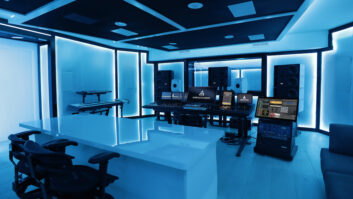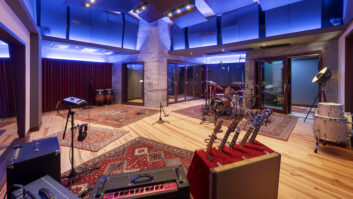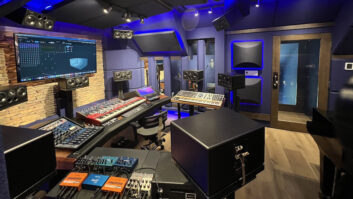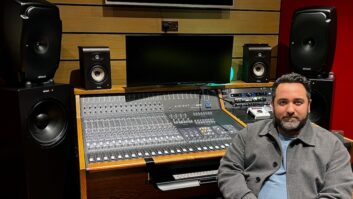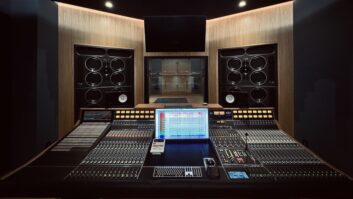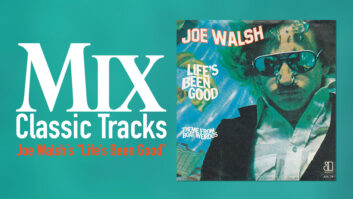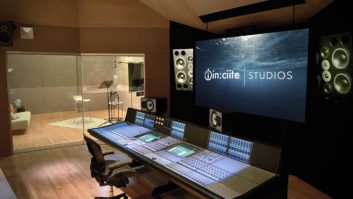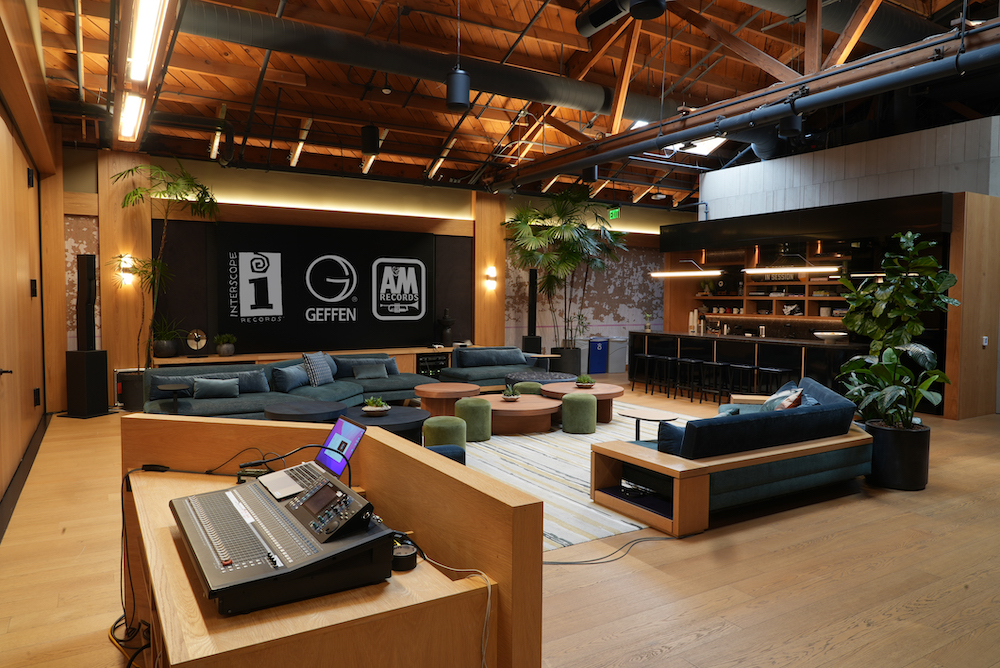
Don’t pass up Part 1!
DOLBY ATMOS, FROM STUDIO TO STAGE
UMG was an early adopter of Atmos Music mixing and distribution, working with Dolby, PMC, Tidal, Amazon, Samsung and others to get hi-res tracks out to listeners as early as 2019. The preparations, however, began a year prior with the conversion of Capitol Studio C, a stereo room with a host of film score mixing clients, to a 7.1.4 Atmos mix studio, designed and built by an in-house team led by Art Kelm, Nathaniel Kunkel and Ceri Thomas, then with Dolby. At the time, it was the only Atmos room in town for music.
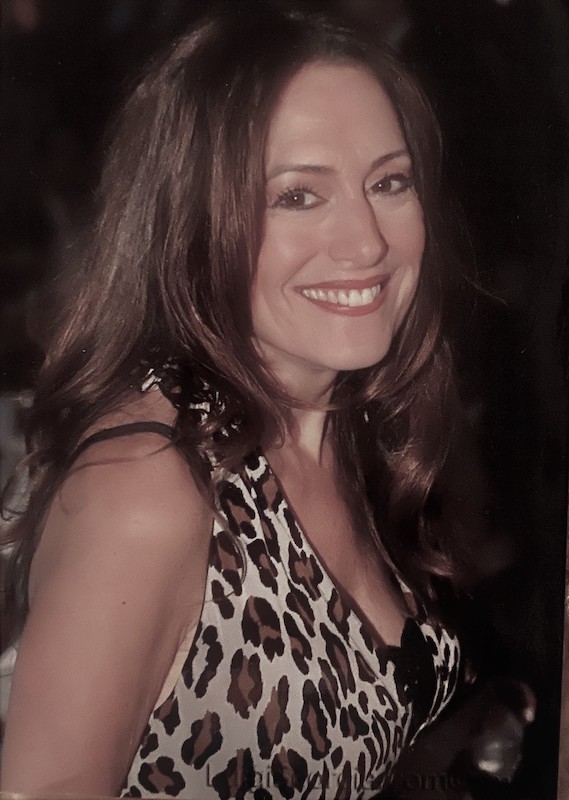
“Studio C at Capitol was the first,” confirms Paula Salvatore, then VP Studios, Administration & Management at Capitol and now VP Client Relations and Studio Marketing, UMG. “That’s where our engineers first started to develop their approach to Atmos mixes. Then Covid hit, and with the studios open only on and off, and with restrictions, the company took the opportunity to start re-mixing the catalog for Atmos. Then Capitol was closed down for earthquake retrofitting, and right away, there was a need for more rooms. Studio 4 at 21fifteen Studios came next, and it was a success. Then The Mail Room across the street. The company has definitely committed itself to immersive music, and it’s great for the artists.”
As UMG began to assume a leading role in mixing music for Dolby Atmos, Mario de Arce started outfitting some of the company’s studios beyond 21fifteen. “I’ve helped design and build three Atmos rooms at East Iris in Nashville, two in Santa Monica and two at Republic in New York. I’ve shared my designs, supporting UMG’s studios in Japan, South Africa, Austria, all over the world, so they don’t have to reinvent the wheel. We’re really embedded into the Atmos world.”

Studio Four, 21fifteen’s sole Atmos mix room, became so busy that de Arce was asked to build another across the street. The Mail Room, as it’s known, boasts a PMC 11.1.6 monitor setup and a large, custom Avid S6 surface. It has since morphed into a dual-duty, mix-for-picture space, with de Arce adding a screen and a second Pro Tools source rig to enable Chris Jenkins, EVP, UMG Digital Studios, and an Oscar, Emmy and BAFTA-winning re-recording mixer, to work on documentaries and other projects.
Because only about five people at a time can share the immersive experience in Studio Four, de Arce was tasked with upgrading the Stage for large-format immersive music playback. The Stage now features an L-Acoustics 13.1.10 speaker rig designed in collaboration with Dolby and conforming to its DARDT specifications—just like all his Atmos mix rooms, de Arce notes.
A total of 13 paired L-Acoustics Syva and Syva Low cabinets around the walls deliver the LCR and surrounds, with 10 L-Acoustics X12s in the ceiling grid carrying the height information. Four L-Acoustics KS21 subs in the front of the room, with another two on each side wall, support both LFE and bass management.
The system’s front end includes a pair of Apple Mac Studio computers running Pro Tools HDX and the Dolby RMU. Avid MTRX II and DirectOut Prodigy.MP interfaces provide signal routing, processing and system tuning, as well as bass management. Signals are routed to the 11 L-Acoustics LA4x amplifiers, which also offer onboard EQ, level and delay via AVB. An Allen & Heath dLive desk enables additional inputs— from a live performance setup, for instance—to be introduced into the system.
PERFORMANCE AND PRESENTATION
“Our engineer, Adam Loeffler, worked tirelessly on the tuning ahead of Dre’s event,” Roey Hershkovitz recalls. “With that Atmos system in there now, we’re always working to get another one-and-a-half percent of performance out of it, because every little bit matters.” The first event to make use of the new Dolby Atmos playback rig was Giles Martin’s presentation of his mixes of the Beatles’ Revolver album.
A subsequent project combined the facility’s networking with the Stage’s Atmos capabilities. “We had a band, Larry Goldings and a jazz quartet, in Studio One that we were also filming.” Hershkovitz says. “We piped it onto the Stage and performed a live Atmos mix as the band was performing in-studio. That was a fun day, and a nice opportunity to show where we can take things. We have a wide range of engineers who are at different points in their careers. The younger folks hadn’t had an opportunity to participate in something like that, and you could really see how energized and jazzed they were that day.”
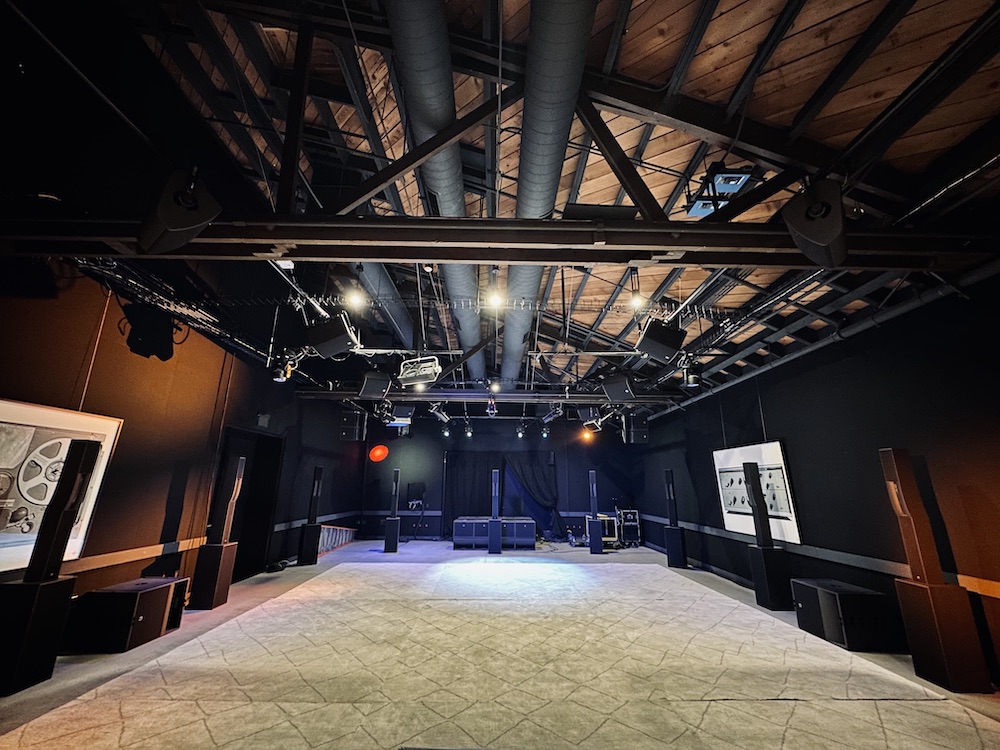
Further demonstrating the Stage’s potential, Pat Kraus adds, the space has been used for car audio R&D. “We brought a Mercedes in, and together with the Mercedes engineers and some of our creative folks, mixers and producers, analyzed what’s happening to immersive mixes in the car. We gave them feedback, and they figured out how to tweak [the in-car system],” he says.
The collaboration between Mercedes-Benz and Apple Music, announced in late 2022, offers native playback of immersive Apple Music Spatial Audio tracks to subscribers without an Apple device—a first—in certain Mercedes models. UMG simultaneously launched “Approved in a Mercedes-Benz,” a new mix approval process.
Previously, UMG had built and outfitted a “typical living room,” where creatives and others could listen to immersive music mixes, but the Stage takes that to the next level, Hershkovitz says, providing yet another way to evangelize Dolby Atmos and introduce people to the format: “Somebody can go to Apple Music and curate or AirPlay from their phone—not just to the living room but to this massive soundstage and say, ‘This is the experience.’ There’s a Sonos soundbar in the living room, there’s a Mercedes-Benz parked outside, so we are really showing folks that, in addition to the headphones in the marketplace, there are so many ways to hear Atmos music.”
